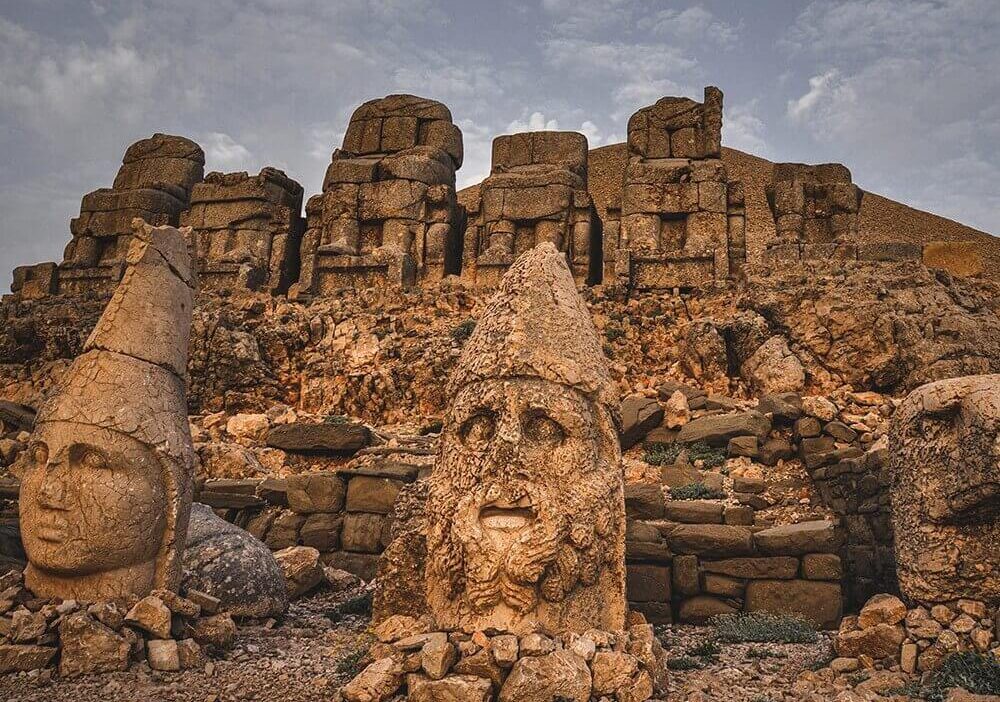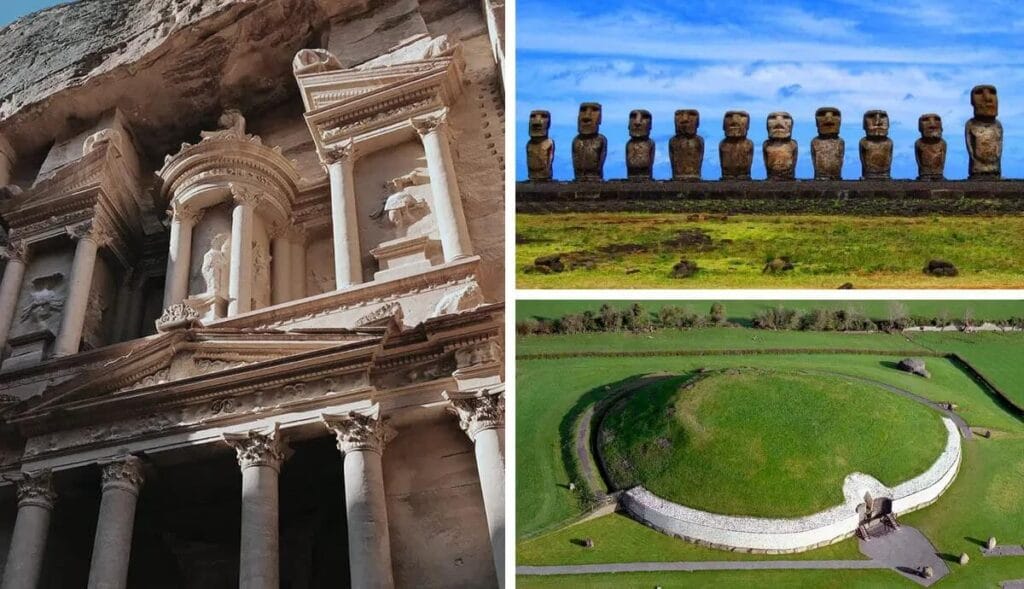Exploring UNESCO world heritage sites is one of the most rewarding ways to experience the incredible diversity of our planet. These locations have been officially recognized for their cultural, historical, or natural significance and represent humanity’s shared heritage.
From ancient temples and medieval towns to unique ecosystems and breathtaking landscapes, each site tells a story that transcends borders and generations. Traveling to UNESCO world heritage sites offers a chance to connect with history in a deeply personal way.
Walking through centuries-old ruins, standing before awe-inspiring monuments, or witnessing rare wildlife can transform your understanding of the world.
Whether you are an avid traveler or simply someone who appreciates beauty and knowledge, these sites provide unforgettable experiences that stay with you for a lifetime.
More than 1,000 places across the globe have earned UNESCO’s prestigious designation. While some are famous and attract millions of visitors each year, others remain hidden gems waiting to be discovered.
No matter where your travels take you, including these destinations in your itinerary will enrich your journey and broaden your perspective. This guide will highlight iconic locations, hidden treasures, and essential tips for making the most of your visits to UNESCO world heritage sites.
UNESCO World Heritage Sites: The Most Iconic Locations Worldwide
When people think of UNESCO world heritage sites, certain names immediately come to mind. These are the places that define human creativity, resilience, and our connection to the natural world.
Machu Picchu in Peru stands as a symbol of the Incan Empire’s ingenuity and mystique. Nestled high in the Andes, the site attracts explorers who want to experience its terraced slopes and spiritual atmosphere.
The Great Wall of China stretches over 13,000 miles and remains one of the most impressive architectural feats ever built. Each section tells a different story about defense, culture, and the ambition of past dynasties.
The Pyramids of Egypt, especially the Giza Plateau, showcase the skill and vision of ancient engineers. These structures have captivated historians and travelers for centuries.
The Historic Centre of Rome offers a condensed journey through Western civilization. From the Colosseum to the Pantheon, every corner is a testament to Rome’s enduring influence.
In India, the Taj Mahal draws millions each year to admire its perfect symmetry and romantic history. As one of the most recognizable UNESCO world heritage sites, it exemplifies the universal appeal of beauty and devotion.
Other legendary sites include Petra in Jordan, Angkor Wat in Cambodia, and Stonehenge in the United Kingdom. These remarkable places serve as reminders of our shared heritage and the power of human achievement.
How To Plan Your Trip To These Historical Wonders
Visiting UNESCO world heritage sites requires thoughtful planning to get the most out of your experience. Many of these locations are in remote or sensitive areas where infrastructure may be limited, so preparation is key.
Start by researching the best times to visit. Popular sites can be crowded during peak seasons, so consider traveling during shoulder months to enjoy a quieter atmosphere and better access to photography opportunities.
Booking accommodations in advance is essential, especially in regions where visitor numbers are restricted to protect fragile environments. Some sites, like Machu Picchu, require special permits or timed entry tickets. Secure these early to avoid disappointment.
Consider hiring a local guide. Guides not only provide valuable historical context but also help you navigate the site respectfully and efficiently. Their knowledge can enrich your understanding far beyond what you will find in guidebooks.
If you plan to visit multiple UNESCO world heritage sites on one trip, build in extra time between destinations. Travel delays, weather changes, and the need for rest are all factors that can affect your schedule. Flexibility ensures a more enjoyable experience.
UNESCO World Heritage Sites: Hidden Gems Worth Discovering
While some UNESCO world heritage sites are household names, countless others remain relatively unknown to mainstream travelers. These hidden gems offer an authentic experience away from the crowds.
Rila Monastery in Bulgaria is a serene retreat surrounded by forested mountains. With its striking frescoes and centuries of monastic history, it is one of Eastern Europe’s most treasured heritage sites.
The Rice Terraces of the Philippine Cordilleras showcase an ancient farming system that has sustained communities for over 2,000 years. Their beauty and ingenuity are astonishing up close.
In Africa, Twyfelfontein in Namibia contains one of the continent’s largest concentrations of rock engravings. These images depict scenes of daily life and spiritual beliefs dating back thousands of years.
Valparaíso in Chile is an artistic port city where colorful houses climb the hillsides. Its lively street art and unique architecture make it a vibrant example of living heritage.
Exploring these lesser-known UNESCO world heritage sites often provides a deeper connection with local culture and history. You will find fewer tourists, more opportunities for meaningful encounters, and the satisfaction of discovering something extraordinary.
Tips For Responsible Tourism And Preservation
When you visit UNESCO world heritage sites, you share in the responsibility of preserving them for future generations. Responsible tourism ensures that these places remain intact and accessible for everyone.
Always follow posted guidelines about where you can walk, photograph, or touch. Many sites have fragile surfaces and ecosystems that can be damaged by seemingly minor actions.
Avoid removing natural materials or artifacts, no matter how small. Even picking a flower or collecting a stone can disrupt delicate environments.
Support local economies by choosing locally owned accommodations and guides. Your contribution helps communities maintain their cultural heritage and invest in sustainable practices.
Reduce your environmental footprint by minimizing waste, using reusable water bottles, and respecting wildlife habitats. Many UNESCO world heritage sites are also protected for their biodiversity, so it is essential to leave no trace.
Finally, educate yourself about the history and significance of the places you visit. The more you understand, the more you will appreciate why preservation matters—and the better your experience will be.
UNESCO World Heritage Sites: Photography And Storytelling Ideas
Capturing your journey through UNESCO world heritage sites requires more than just snapping photos. Thoughtful photography helps tell the story of your visit and conveys the atmosphere and scale of these remarkable places.
Research the best times of day for light. Golden hours around sunrise and sunset create soft shadows and rich colors that enhance architectural details and landscapes.
When photographing large monuments or landscapes, include a person in the frame to provide scale. A small human figure next to a massive structure emphasizes its grandeur.
Experiment with different perspectives. Shoot from high viewpoints, low angles, or through natural frames like arches and trees to add depth and interest.
Respect local customs around photography. In some sites, flash photography or tripods may be prohibited to protect delicate surfaces. Always ask permission when photographing people.
Consider keeping a journal alongside your photos. Documenting your thoughts and experiences adds a personal dimension to your storytelling. Your memories combined with images will create a lasting record of your time exploring UNESCO world heritage sites.
See you in the next post,
Anil UZUN

